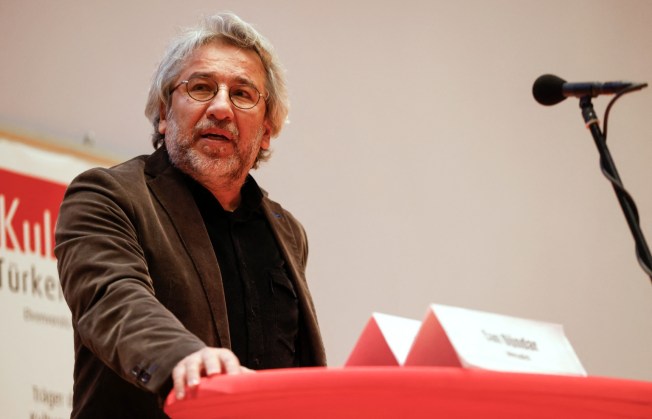On December 30, exiled Turkish journalist Can Dündar revealed that he had been added to the so-called terrorist “gray list,” a database published by the Turkish Interior Ministry that identifies alleged terrorists and offers rewards for their capture. Dündar, who reported on alleged weapon smuggling from Turkey to Syria in 2014, received CPJ’s 2016 International Press Freedom Award in recognition of his work amid government repression.
CPJ has identified at least 14 other members of the Turkish press living in exile who are included on the Interior Ministry’s gray list. The webpage says those journalists are wanted for their alleged ties to the exiled preacher Fethullah Gülen, whom the Turkish government accuses of maintaining a terrorist organization and “parallel state structure,” and of masterminding a July 15, 2016, failed military coup.
“Turkish authorities should refrain from treating exiled journalists like terrorists, and should not include them on wanted lists, which are blatant attempts to intimidate journalists from doing their jobs,” said CPJ Europe and Central Asia Program Coordinator Gulnoza Said.
Separately, at least three journalists were injured by Russian shelling in Ukraine. On December 31, Russian forces shelled Kyiv, injuring Wataru Sekita, a video reporter with the Japanese daily newspaper Asahi Shimbun. And on Monday, Russian shelling in Druzhkivka, a city in the eastern region of Donetsk, injured Björn Stritzel, a reporter with the German daily newspaper Bild, and an unidentified Ukrainian journalist.
Global press freedom updates
- CPJ calls for release of two journalists jailed for covering Hong Kong’s pro-democracy protests
- Bangladeshi environmental journalist Abu Azad abducted, severely beaten
- Algerian authorities arrest journalist Ihsane el-Kadi, shutter outlets Radio M and Maghreb Emergent
- Tajik journalist Abdusattor Pirmuhammadzoda sentenced to seven years in prison
Spotlight
January 6 marks a dark anniversary for democracy in the U.S.—two years since the riots at the U.S. Capitol building in Washington, D.C. Journalists played a critical role in keeping the world informed that day and paid a price.
“The level of vitriol directed at lawmakers, law enforcement, and journalists was unprecedented in the United States,” CPJ’s United States and Canada Program Coordinator Katherine Jacobsen explains in an interview published today.
Following the violence, CPJ interviewed journalists who covered the riots. A freelance photojournalist told CPJ: “I had three different people threaten to shoot me over the course of the day.” Read more interviews here.
According to the U.S. Press Freedom Tracker, in the January 6 riots:
- 18 journalists were assaulted
- Tens of thousands of dollars of news equipment were damaged
- At least 10 people were charged in connection with assaults of journalists or destruction of equipment.
Jacobsen wrote in January 2021 that former U.S. President Donald Trump lit the fuse of anti-media sentiment, but that the problem goes beyond him.
In the December 29 print edition of The Washington Post, CPJ ran an ad about the 363 journalists who were imprisoned around the world as of December 1.
The ad quotes CPJ President Jodie Ginsberg: “Criminalizing journalism has impacts far beyond the individual in jail: It stifles vital reporting that helps keep the public safe, informed and empowered.”
Read more about these jailed journalists and their stories in CPJ’s 2022 Prison Census.
What we are reading, watching, and listening to:
- Special Collection of the Case Law on Freedom of Expression — Global Freedom of Expression, Columbia University
- Global Spyware Scandal: Exposing Pegasus — Anne Poiret and Arthur Bouvart, Forbidden Stories and PBS FRONTLINE
- Undercurrents: Tech, Tyrants, and Us — Coda Story and Audible podcast
- In Our View: Journalists give lives, freedom for democracy — The Columbian
- The EU can do more to protect independent media — Adam Bodnar, Liberal Debatt
- With Mass Arrests, Now is ‘Worst Time’ to Be Journalist in Iran — Carmela Caruso, Voice of America
- Journalist Hopes Coverage on Ethiopia’s Tigray Will Bring Justice — Salem Solomon, Voice of America
